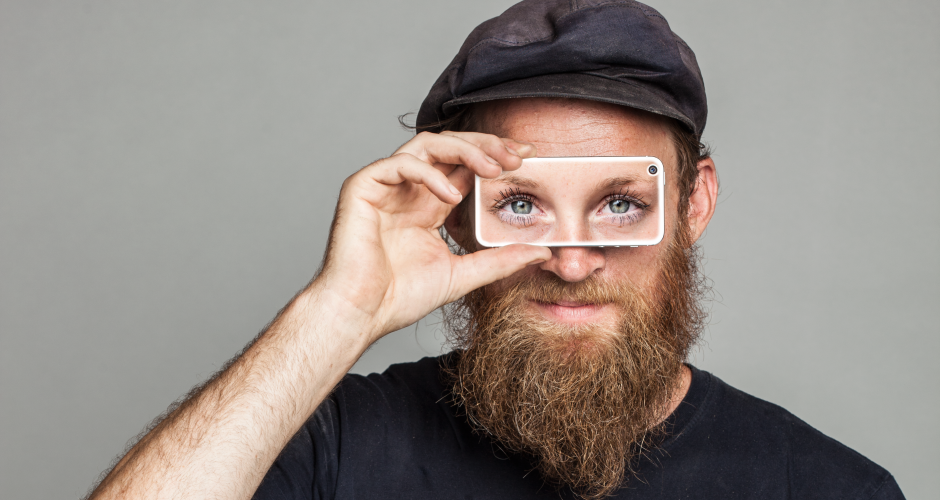Assistive Tech
Advances in technology are reinventing accessibility for disabled people in the digital age.
Mobile technology is helping people with disabilities to navigate the world independently. Be My Eyes, created by visually impaired craftsman Hans Jørgen Wiberg, is an app that matches a sighted volunteer with a visually impaired person in need of assistance. By using a smartphone camera and video connection with a volunteer, a blind user can ask questions about any visual cues in their environment and volunteers can describe what they see. Questions tend to be around simple tasks such as navigating, reading instructions, or identifying the expiration date of a product. The app includes an element of gamification, with volunteers earning points for every person they’ve helped.
California-based Aira works in a similar way, using a mobile device or a pair of smart glasses to connect a blind user with a trained visual interpreter. The company is working to incorporate AI into the app, to make the process even more instant and simple. Chieko Asakawa, a visually impaired IBM Fellow, is another pioneer in this space, having developed NavCog, a navigation app for the blind.
In addition to apps and software, hardware is evolving, too. South Korean start-up Dot launched the first Braille smartwatch that allows users to read texts, tell the time and navigate with GPS with their fingers. Toronto-based eSight has developed a headset that uses a camera and advanced optics to help people with extremely low vision to see. It comes with a controller that can adjust the brightness and magnification. The device is said to work for almost four out of five people who have lost their vision.
Brands are starting to recognize the role they can play in this space. In 2016, Toyota announced a wearable device to help the blind with mobility. The product, which has an in-built camera, is worn over the shoulders and uses sound and vibrations to direct the wearer. Moreover, while not specifically made for the blind, voice technology from tech giants Amazon and Google can also be helpful. The Amazon Echo was recently endorsed by the RNIB (Royal National Institute Of Blind People).
Vision is just the beginning. New tech is helping those with a variety of disabilities. Oticon’s Opn, an advanced hearing aid presented at CES 2017, connects to smart devices around the home, alerting users when their laundry is finished or if someone is at the door. French start-up Gaspard offers fitness-tracking for wheelchair users, monitoring weight loss and inactivity while also detailing posture and positioning.

Brands can help lead the way with assistive technology. J. Walter Thompson and Listerine’s Feel Every Smile is one example of a brand doing this effectively. The field is ripe with ideas that have yet to be explored. The technology already exists and is just waiting to be harnessed.
Voice technology, which is explored in detail in our Speak Easy report, is one means of providing helpful solutions. Google’s speech recognition is now at 95% accuracy, mirroring human accuracy. This kind of tech, in addition to simply being convenient for the able-bodied and sighted, can ultimately transform accessibility and change lives.

